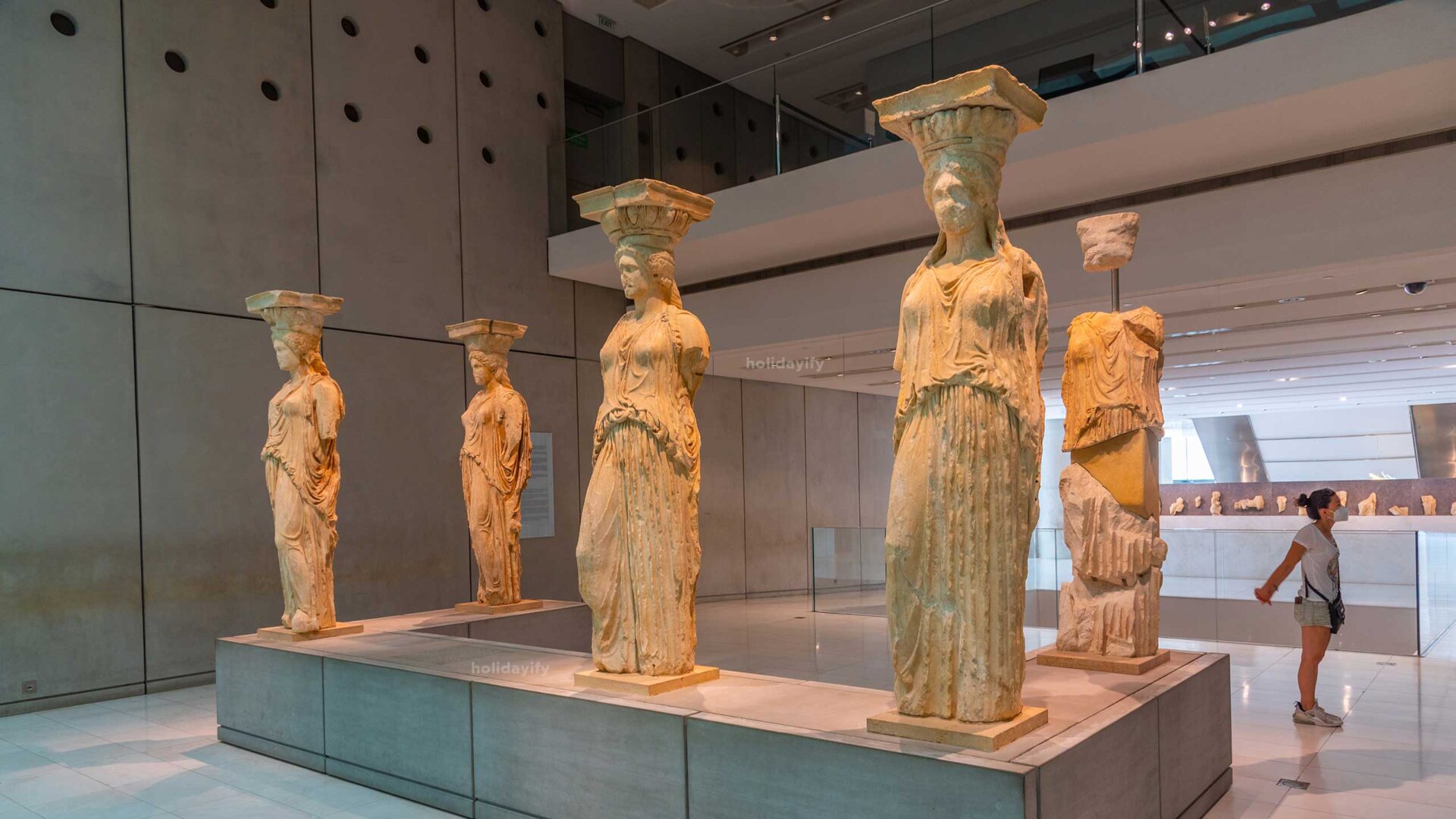As I stepped into the magnificent city of Athens, I couldn’t help but be drawn to the captivating allure of the Acropolis Museum. Nestled at the foot of the iconic Acropolis hill, this extraordinary museum stands as a testament to the rich history and cultural heritage of Greece. With its awe-inspiring architecture, remarkable collections, and immersive exhibits, the Acropolis Museum is a treasure trove waiting to be discovered. Join me on a journey through time as we delve into the wonders that await within the walls of this remarkable institution.
History and significance of the Acropolis Museum
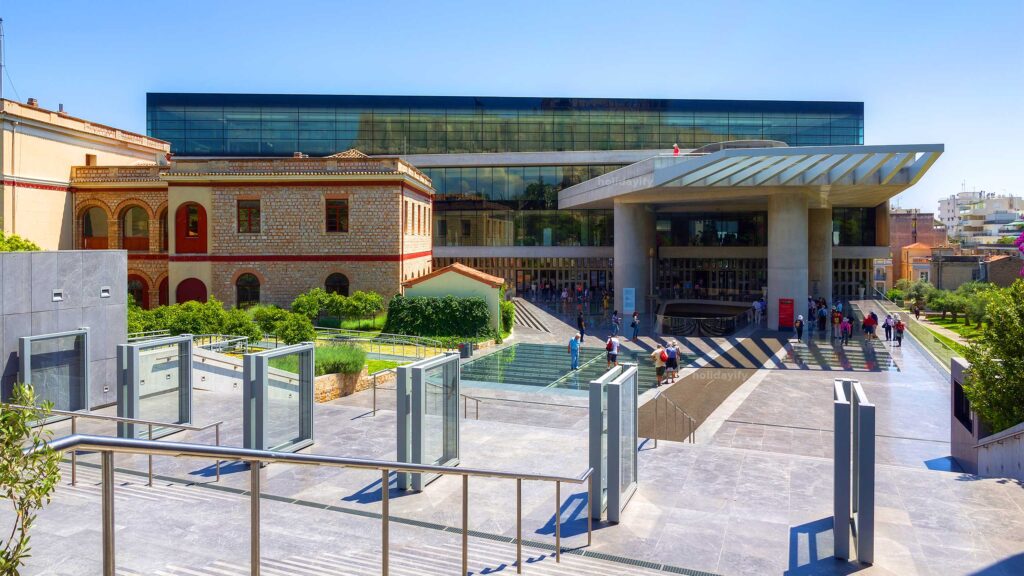
The history of the Acropolis Museum dates back to the late 19th century when the first museum was established on the Acropolis hill itself. However, it wasn’t until 2009 that the current Acropolis Museum, designed by renowned architect Bernard Tschumi, opened its doors to the public. This modern marvel was built to house the countless treasures unearthed during archaeological excavations conducted on the Acropolis.
The Acropolis Museum holds immense significance as it serves as a bridge between past and present, showcasing the historical and cultural legacy of ancient Greece. Its strategic location allows visitors to gaze upon the Acropolis itself, offering a unique perspective on the architectural wonders that once graced the hilltop. The museum’s mission is not only to preserve and display ancient artifacts but also to educate and inspire visitors about the rich heritage of Athens.
Architecture and design of the Acropolis Museum
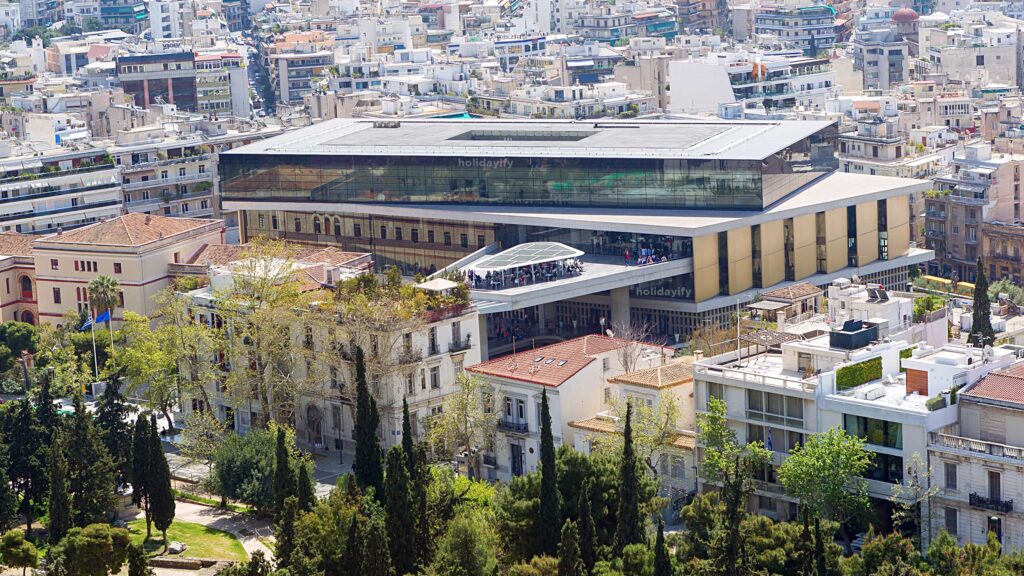
The architecture and design of the Acropolis Museum are nothing short of breathtaking. The museum seamlessly blends modern elements with ancient influences, creating a harmonious space that pays homage to the past while embracing the present. The building itself is a work of art, with its sleek glass exterior and transparent floors that reveal the ongoing archaeological excavations below.
One of the most striking features of the museum is the Parthenon Gallery, located on the top floor. This gallery is designed to replicate the dimensions and orientation of the Parthenon temple, creating an immersive experience for visitors. The glass walls allow natural light to flood the space, illuminating the Parthenon sculptures known as the Elgin Marbles. As you walk through the gallery, you can’t help but feel a sense of awe and wonder at the grandeur of ancient Greek architecture.
Collections and exhibits at the Acropolis Museum
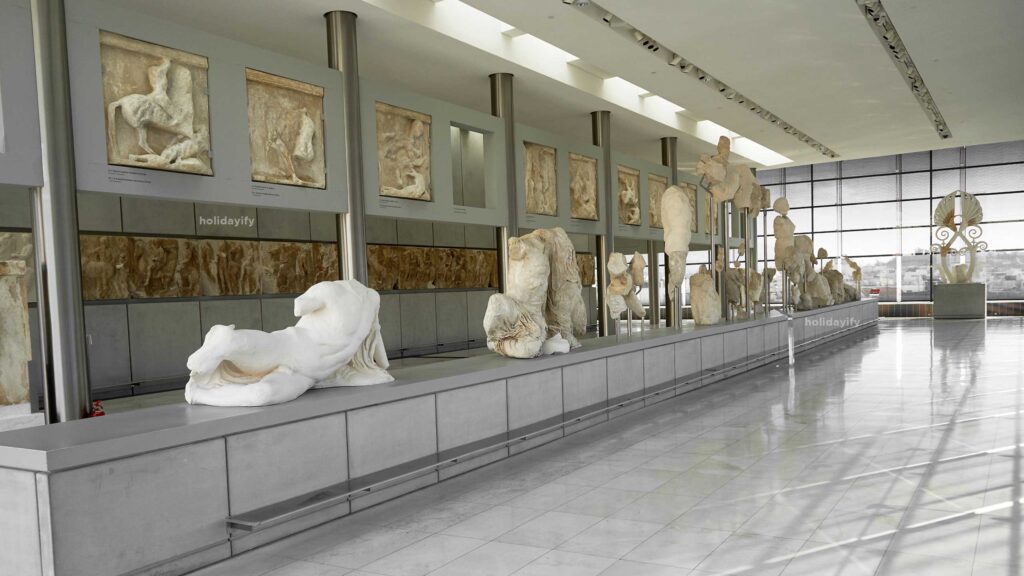
The Acropolis Museum is home to a vast collection of artifacts that span thousands of years of Greek history. From intricately carved marble statues to delicate pottery and exquisite jewelry, the museum offers a comprehensive overview of ancient Greek civilization. The exhibits are thoughtfully curated, allowing visitors to explore different aspects of Greek culture, religion, and daily life.
One of the highlights of the museum is the Acropolis Archaic Gallery, which houses the renowned Kore statues. These life-sized female figures, carved with meticulous attention to detail, are a testament to the artistic prowess of ancient Greek sculptors. Another must-see exhibit is the Gallery of the Slopes of the Acropolis, where you can admire the original caryatids that once supported the Erechtheion temple.
Exploring the highlights of the Acropolis Museum
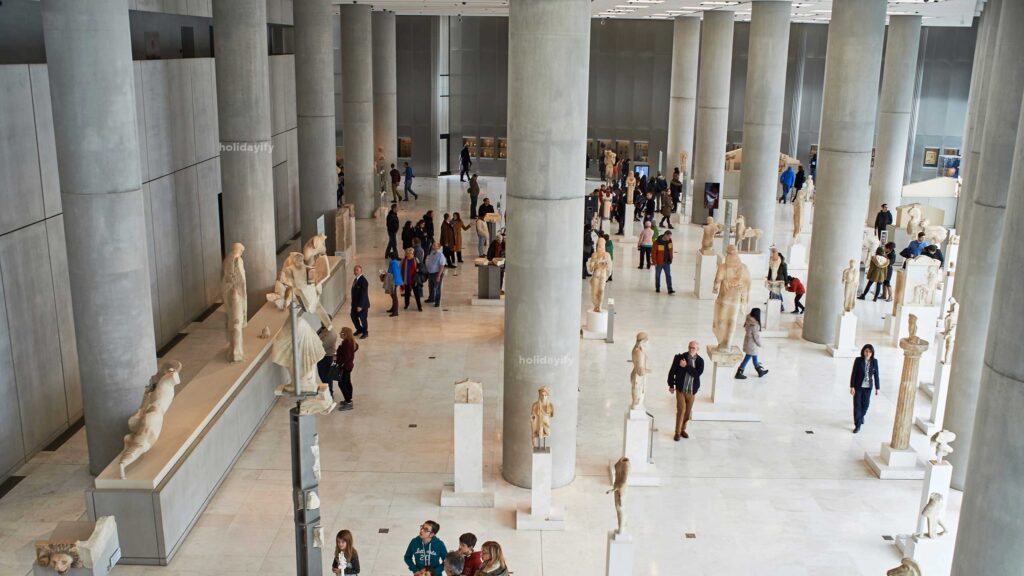
No visit to the Acropolis Museum would be complete without exploring its most iconic treasures. As you make your way through the museum, be sure to stop by the Archaic Gallery to marvel at the exquisite Kore statues. These sculptures, dating back to the 6th century BCE, showcase the evolution of Greek art and provide a glimpse into the lives of ancient Greeks.
Next, head to the Parthenon Gallery, where you’ll come face to face with the Elgin Marbles. These magnificent sculptures once adorned the Parthenon temple and depict scenes from Greek mythology. As you admire the intricate details and masterful craftsmanship, you can’t help but be transported back in time to the golden age of Athens.
Finally, don’t miss the Gallery of the Slopes of the Acropolis, where you can marvel at the original caryatids. These female figures, with their graceful poses and intricately draped clothing, are a testament to the ingenuity and artistic skill of ancient Greek sculptors.
Practical information for visiting the Acropolis Museum

To ensure a smooth and enjoyable visit to the Acropolis Museum in Athens, it’s important to plan ahead. The museum is open from Tuesday to Sunday, with extended hours on Fridays.
Opening Hours of Acropolis Museum
Winter season: 1 November – 31 March
Monday – Thursday: 9 am – 5 pm / Last entry: 4:30 pm
Friday: 9 am – 10 pm / Last entry: 9:30 pm
Saturday & Sunday: 9 am – 8 pm / Last entry: 7:30 pm
Summer season: 1 April – 31 October
Monday: 9 am – 5 pm / Last entry: 4:30 pm
Tuesday – Sunday: 9 am – 8 pm / Last entry: 7:30 pm
Friday: 9 am – 10 pm / Last entry: 9:30 pm
Tickets can be purchased online or at the museum entrance. It’s worth noting that there are different ticket options available, including reduced prices for students, seniors, and groups. Audio guides and guided tours are also available for those who wish to enhance their museum experience.
Upon arrival at the museum, be prepared for security checks and bag inspections. Large bags and backpacks are not permitted inside the galleries, so it’s advisable to travel light. Photography is allowed in most areas of the museum, except for a few designated zones. It’s always respectful to follow the museum’s guidelines and refrain from touching the exhibits.
Tips for a memorable visit to the Acropolis Museum
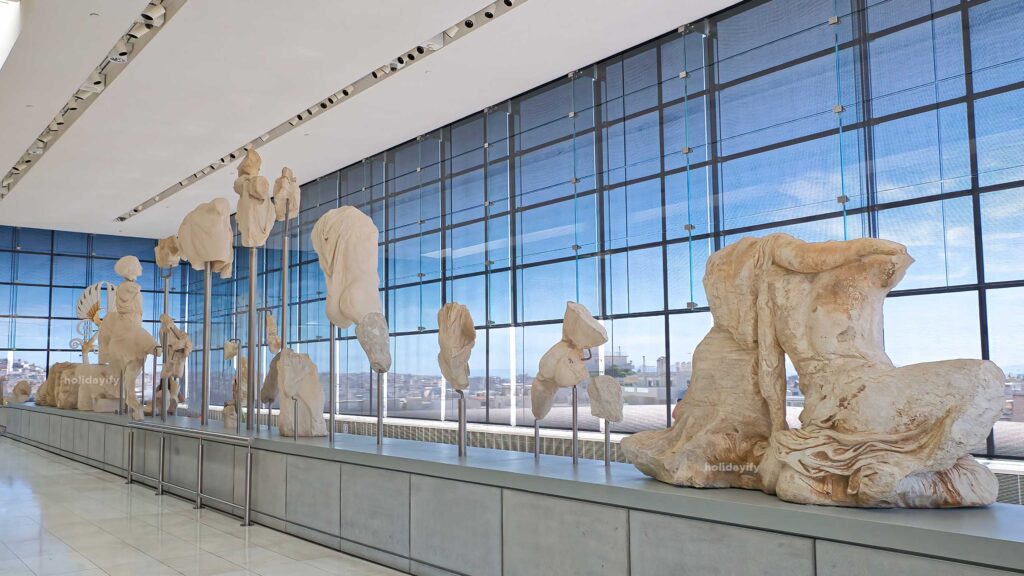
To make the most of your visit to the Acropolis Museum, here are a few tips to keep in mind. Firstly, consider visiting the museum early in the morning or late in the afternoon to avoid the crowds. This will allow you to fully immerse yourself in the exhibits and take your time exploring without feeling rushed.
Secondly, take advantage of the museum’s audio guides or guided tours. These resources provide valuable insights and help bring the exhibits to life. Don’t hesitate to ask questions and engage with the knowledgeable staff who are always ready to share their expertise.
Lastly, don’t forget to pause and admire the breathtaking view of the Acropolis from the museum’s terrace. This vantage point offers a unique perspective on the ancient citadel and is the perfect spot to capture memorable photos.
Nearby attractions and things to do in Athens
[Anzeigen-ID=”202″]
While the Acropolis Museum is undoubtedly a highlight of any visit to Athens, the city offers a plethora of other attractions and activities to explore. Take a stroll through the historic Plaka neighborhood, with its charming narrow streets and traditional tavernas. Visit the ancient Agora, where Socrates and Plato once walked, and discover the birthplace of democracy.
For art enthusiasts, a visit to the National Archaeological Museum is a must. This vast institution houses an extensive collection of ancient Greek artifacts, including the iconic Mask of Agamemnon. Alternatively, immerse yourself in contemporary Greek art at the Benaki Museum or the Museum of Cycladic Art.
To experience Athens from a different perspective, climb up Lycabettus Hill and enjoy panoramic views of the city. Alternatively, explore the vibrant neighborhood of Monastiraki, with its bustling flea market and eclectic mix of shops and cafes.
Conclusion: Immerse yourself in the wonders of the Acropolis Museum
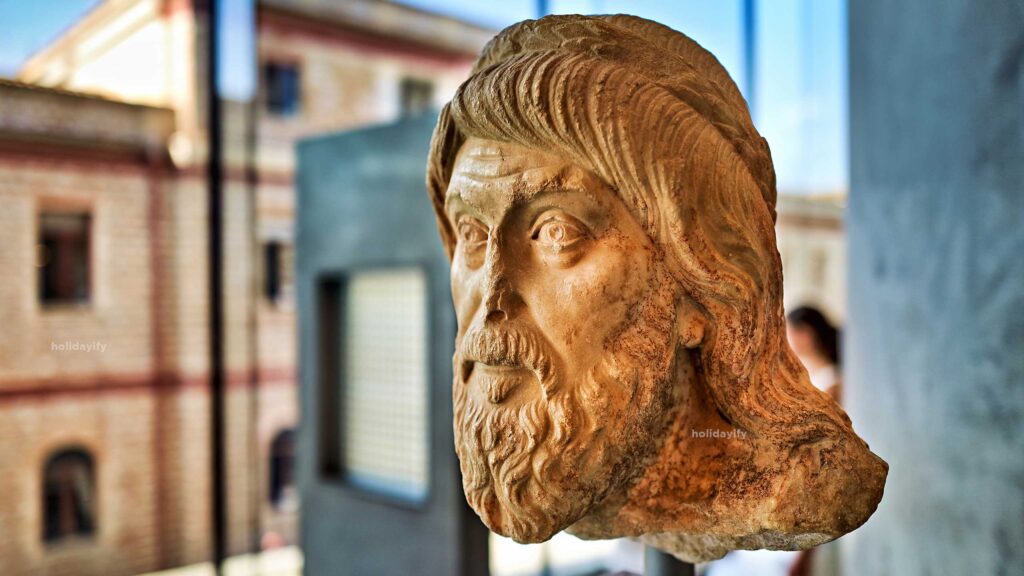
As I reluctantly bid farewell to the Acropolis Museum, I couldn’t help but be filled with a sense of awe and admiration for the rich cultural heritage of Greece. From its captivating architecture to its priceless collections, the museum offers a glimpse into the ancient world that once thrived on the Acropolis hill.
A visit to the Acropolis Museum is not just a journey through time, but also an opportunity to connect with the vibrant spirit of Athens. So, whether you’re a history enthusiast, an art lover, or simply a curious traveler, be sure to include the Acropolis Museum in your itinerary. Prepare to be transported back in time and immerse yourself in the wonders that await within its hallowed halls.
